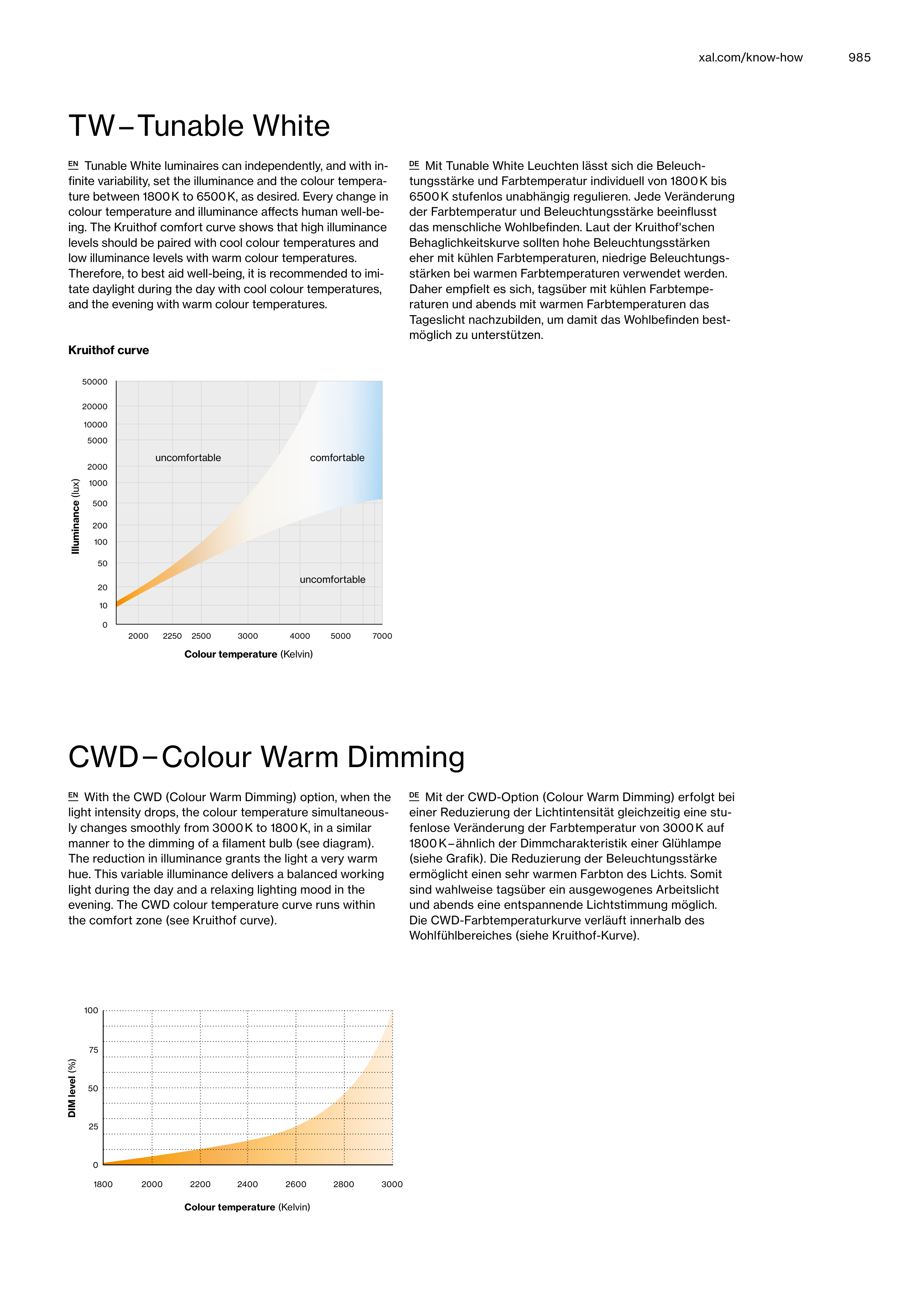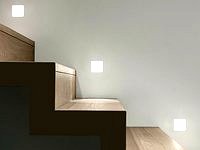CWD – Colour Warm Dimming
TW – Tunable White
Colour temperature (Kelvin)
DIM level (%)
0
100
50
75
25
1800
2000
2400
2800
2200
2600
3000
Illuminance (lux)
Colour temperature (Kelvin)
50000
20000
10000
5000
2000
2000
2250
2500
3000
4000
5000
7000
1000
500
200
100
50
20
10
0
uncomfortable
uncomfortable
comfortable
Kruithof curve
985
xal.com/know-how
DE Mit der CWD-Option (Colour Warm Dimming) erfolgt bei
einer Reduzierung der Lichtintensität gleichzeitig eine stu-
fenlose Veränderung der Farbtemperatur von 3000 K auf
1800 K – ähnlich der Dimmcharakteristik einer Glühlampe
(siehe Grafik). Die Reduzierung der Beleuchtungsstärke
ermöglicht einen sehr warmen Farbton des Lichts. Somit
sind wahlweise tagsüber ein ausgewogenes Arbeitslicht
und abends eine entspannende Lichtstimmung möglich.
Die CWD-Farbtemperaturkurve verläuft innerhalb des
Wohlfühlbereiches (siehe Kruithof-Kurve).
DE Mit Tunable White Leuchten lässt sich die Beleuch-
tungsstärke und Farbtemperatur individuell von 1800 K bis
6500 K stufenlos unabhängig regulieren. Jede Veränderung
der Farbtemperatur und Beleuchtungsstärke beeinflusst
das menschliche Wohlbefinden. Laut der Kruithof'schen
Behaglichkeitskurve sollten hohe Beleuchtungsstärken
eher mit kühlen Farbtemperaturen, niedrige Beleuchtungs-
stärken bei warmen Farbtemperaturen verwendet werden.
Daher empfielt es sich, tagsüber mit kühlen Farbtempe-
raturen und abends mit warmen Farbtemperaturen das
Tageslicht nachzubilden, um damit das Wohlbefinden best-
möglich zu unterstützen.
EN With the CWD (Colour Warm Dimming) option, when the
light intensity drops, the colour temperature simultaneous-
ly changes smoothly from 3000 K to 1800 K, in a similar
manner to the dimming of a filament bulb (see diagram).
The reduction in illuminance grants the light a very warm
hue. This variable illuminance delivers a balanced working
light during the day and a relaxing lighting mood in the
evening. The CWD colour temperature curve runs within
the comfort zone (see Kruithof curve).
EN Tunable White luminaires can independently, and with in-
finite variability, set the illuminance and the colour tempera-
ture between 1800 K to 6500 K, as desired. Every change in
colour temperature and illuminance affects human well-be-
ing. The Kruithof comfort curve shows that high illuminance
levels should be paired with cool colour temperatures and
low illuminance levels with warm colour temperatures.
Therefore, to best aid well-being, it is recommended to imi-
tate daylight during the day with cool colour temperatures,
and the evening with warm colour temperatures.







